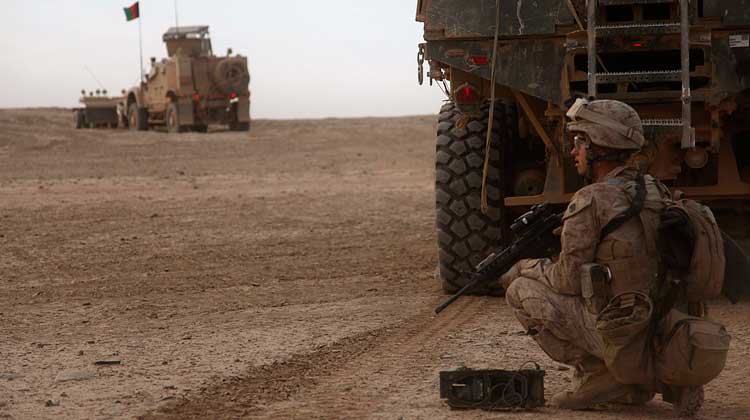The best strategy for the United States withdrawing troops and resources from Afghanistan is one that is cautious, measured, and phased according to a Feb. 6 report from the Center for Strategic & International Studies.

“Absent a successful peace negotiation, a U.S. force draw-down should be tied to Afghanistan meeting performance and governance benchmarks and tied to conditions on the ground, as was the approach taken in the U.S. policy announced in August 2017,” note authors Daniel F. Runde and Earl Anthony Wayne in Finishing Strong: Seeking a Proper Exit from Afghanistan.
Though the report cites progress throughout the country, the job isn’t finished, particularly related to security, the country’s economy, corruption, and many other factors. And the authors warn that a rapid withdrawal could imperil many long-term goals.
“Such a troop withdrawal would further undermine U.S. leverage to press ahead in talks with the Taliban and to help foster serious Afghan-to-Afghan negotiations over the underlying political causes of the conflict,” the report states. “It will doubtless be difficult to devise the confidence-building steps and mechanisms needed to establish a peace process where the Taliban and other Afghan political forces are participating in a functioning government.”
The challenges woven through Afghan society are still quite daunting.
According to the report, 35 percent of the country’s population lives in insurgent-controlled areas. However, the report cites a study that indicates a large majority of the populous (82 percent) is not sympathetic to the Taliban, although they still fear it.
When it comes to corruption, the report cites the Transparency International Corruption Perceptions Index 2018 that ranks Afghanistan 172nd of 180 countries for corruption. The only countries cited as more corrupt in the list are North Korea, Yemen, South Sudan, Syria, and Somalia.
Accompanying the corruption is excessive violence—more than 8,000 civilian deaths and injuries each year and about 40 troop deaths daily.
In addition, the country is extremely poor, with half the population making about $1 per day. And forced migration has spread 2.6 million Afghan refugees all over the globe.
To top that off, opium production has once again exploded, with production jumping 63 percent from 2016 to 2017, according to the report. But this poses still another more difficult situation.
“Opium cultivation provides the equivalent of 590,000 full-time jobs, which is more than the combined employment of the afghan army and police,” the report states. “Many reports indicate that the Taliban has taken increased control over the illegal drug sector, receiving approximately 65 percent of their income from narcotics.”
Still, the report notes that progress is being made, and through patience and the right strategy, an orderly withdrawal is possible.
“The United States can be a more effective player if it does not signal its departure from Afghanistan, but rather underscores its commitment to maintaining a military presence and security and economic assistance conditional on a solid peace accord and process,” the report states. “The United States, Afghanistan, and allies have invested too much blood and treasure to depart precipitously.”
Read the entire report here.
© 2019 Homeland411
Subscribe to our free weekly
electronic newsletter.